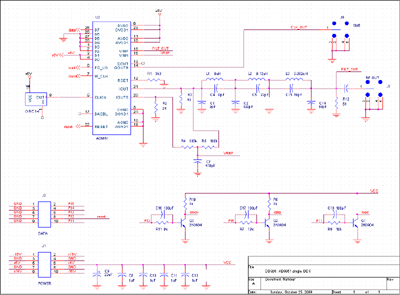
(Click to enlarge)
Frequency synthesis is a process which allows a single reference oscillator to produce a large number of different frequencies, each with accuracy and stability comparable to the reference. There are a number of different ways of doing this, but the most commonly used today are a phase locked loop with a programmable divider and direct digital synthesis (DDS). Both are fairly complex if you have to do all of the work, but fortunately there are a number of DDS chips available which deliver most of the work already done.
The idea behind direct digital synthesis is fairly simple: compute the value of cos(ωnT) (where T is the sampling interval) for successive values of n and send these samples to a D/A converter. Several shortcuts are employed to speed up this computation. If we define θn = ωnT, then θn+1 = θn + Δθ, where Δθ = ωT. This means we can generate successive values of the cosine argument by simply adding a fixed increment to a phase accumulator. To avoid having to actually compute the cosine function, we can use a lookup table. These two tricks allow us to produce a digitally synthesized sine wave with only a single addition and a single memory reference per sample.
There's a bit more to it than this, for a more detailed description, read the two Analog Devices application notes referenced in the next section.
